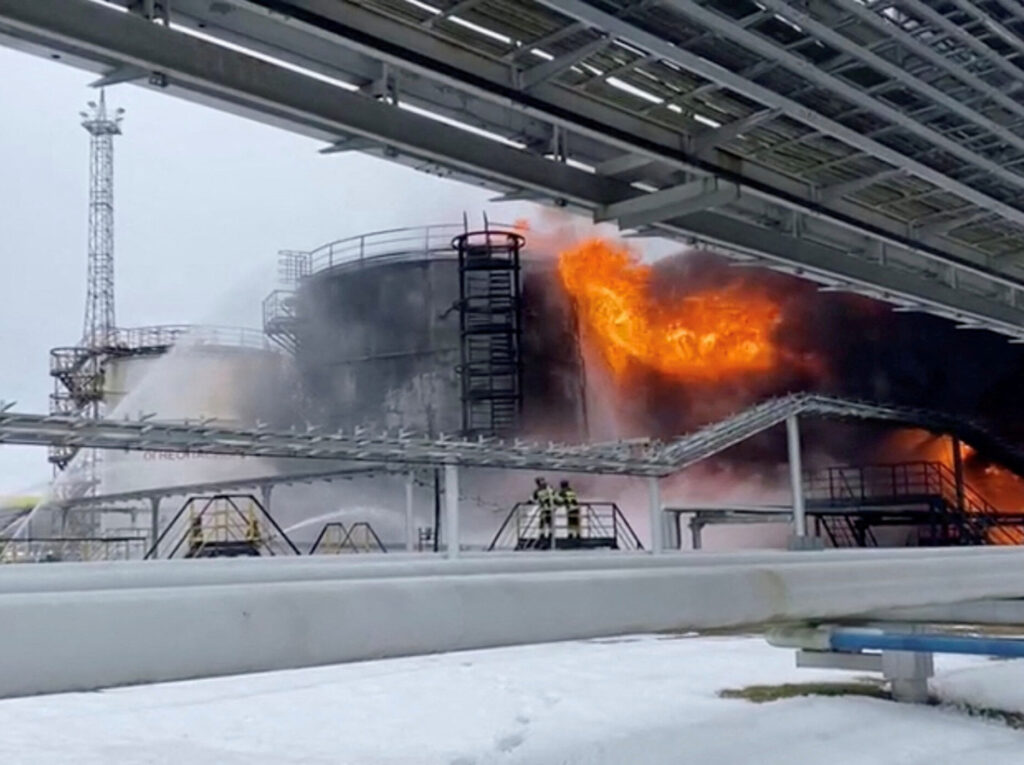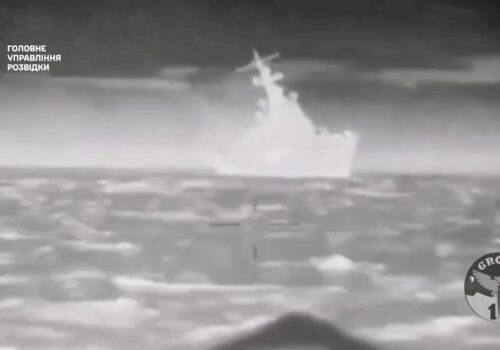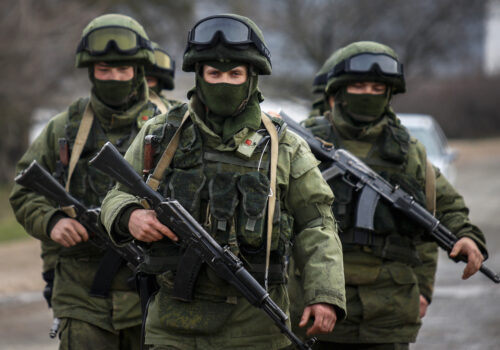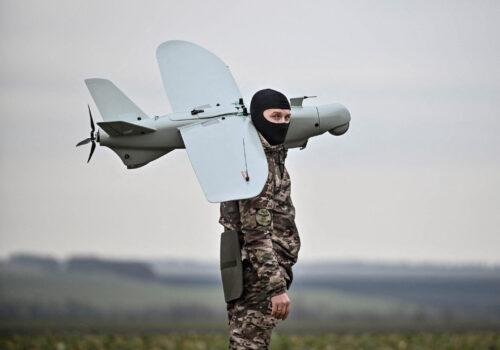For the past two years, international support for Ukraine has been hampered by widespread fear of escalation among the country’s Western partners. This has prevented Ukraine from receiving the kind of long-range weapons that would have allowed the Ukrainian military to strike back against strategic targets inside Russia. Ukraine has responded to the West’s escalation paralysis by developing its own fleet of domestically produced deep strike drones, and is now deploying these long-range weapons against Russian targets with growing frequency.
In the first two months of 2024, Ukraine has launched a new campaign of air strikes inside Russia. Key targets have included the Ust-Luga fuel export terminal on the Baltic Sea close to St. Petersburg, and major oil refineries in Yaroslavl and Volgograd. These attacks against Russia’s energy industry infrastructure mark a new stage in the conflict, with Ukraine aiming to bring the war home to Russia and weaken Putin’s war machine from within.
As the full-scale invasion enters a third year, Russia has largely managed to circumvent sanctions imposed on the country’s oil and gas industry. Despite the loss of European markets and the imposition of price caps, Russia has been able to identify new customers while also finding creative ways of bypassing restrictions.
With Western sanctions failing to have the desired impact, Ukraine’s long-range drone strikes represent a far more direct approach that Kyiv hopes will create greater challenges for the Kremlin. If drone attacks succeed in causing significant disruption to Russia’s economically vital energy sector, this could negatively impact military operations in Ukraine and domestic stability in Russia.
Stay updated
As the world watches the Russian invasion of Ukraine unfold, UkraineAlert delivers the best Atlantic Council expert insight and analysis on Ukraine twice a week directly to your inbox.
The Ukrainian air strike campaign targeting high-value energy assets inside Russia is likely to expand in the coming months. In addition to undermining the economic foundations of the Putin regime, Ukraine’s attacks aim to damage or destroy the Western equipment that is widely used throughout the Russian oil and gas industry. Much of this equipment is already subject to sanctions, making it problematic for Russia to import replacements.
Ukraine’s drone raids are creating dilemmas for Russian military planners and forcing them to make tough choices regarding the deployment of scarce air defense, anti-drone, and electronic warfare capabilities. Much of this is currently concentrated along the front lines in Ukraine, but attacks inside Russia are now fueling calls to transfer units to the deep rear. Given Russia’s vast size and extensive energy infrastructure, it will be extremely difficult to provide comprehensive coverage.
Ukraine’s drone strikes also have an informational aspect as they are difficult to conceal. As a result, they are making the Russian public more aware of the ongoing war in Ukraine and forcing them to acknowledge that it has now reached the home front. This is potentially important as the Kremlin has worked hard for the past two years to insulate Russian society from the invasion of Ukraine, and has sought to keep any negative impact from the war to an absolute minimum.
Another focus of long-range Ukrainian attacks is Russia’s military industrial complex. Over the past year, Ukrainian drones have targeted at least four missile and air defense production facilities in Smolensk, Bryansk, Tula, and Kolomna. There are some indications that these attacks are hampering Russia’s ability to supply its invading army. For example, Ukrainian military officials noted a substantial reduction in the number of lancet drones deployed on the front lines following an attack on a Russian production facility.
Eurasia Center events

Determining the overall impact of Ukraine’s deep strike campaign on the Russian economy is difficult due to the Kremlin’s efforts to conceal evidence of any resulting damage. Nevertheless, international news reports indicate that the initial wave of drone attacks in early 2024 did manage to disrupt energy sector operations and force temporary stoppages at targeted facilities. This achievement underlines the potential of Ukraine’s strategy.
Future long-range operations inside Russia will be shaped by Ukraine’s recently formed Unmanned Systems Force, a new branch of the Ukrainian military dedicated to drone warfare established by President Zelenskyy in early February. While attacks are expected to continue, it will likely take some time for Ukraine to produce enough long-range drones to pose a more serious threat to Russia’s energy sector and military production facilities. Ukrainian officials are committed to producing one million drones in 2024, but this total includes large quantities needed for the front lines as well as additional marine drones to build on Ukraine’s success in the Black Sea.
While there are no wonder weapons or silver bullets in this war, correctly deployed drones in sufficient numbers are capable of making a meaningful difference, both on the battlefield and far beyond the front lines inside Russia. Ukraine’s strategy of targeting high-value energy assets using low-cost drones looks to be both effective and sustainable. It is also a sensible response to mounting concerns over the future of US military aid.
Ukraine’s new generation of long-range drones are comparatively easy to produce. They have also proven surprisingly difficult to intercept. Looking ahead, the key issue is likely to be quantity. If Ukraine can manufacture enough long-range drones, it may be possible to seriously degrade Russia’s essential military capabilities and impact the course of the war.
Victoria Vdovychenko is Program Director of the Security Studies Program at the Centre for Defence Strategies. Alexander Khara is a fellow at the Centre for Defence Strategies.
Further reading
The views expressed in UkraineAlert are solely those of the authors and do not necessarily reflect the views of the Atlantic Council, its staff, or its supporters.

The Eurasia Center’s mission is to enhance transatlantic cooperation in promoting stability, democratic values and prosperity in Eurasia, from Eastern Europe and Turkey in the West to the Caucasus, Russia and Central Asia in the East.
Follow us on social media
and support our work
Image: Firefighters extinguish oil tanks at a storage facility that local authorities say caught fire after the military brought down a Ukrainian drone, in the town of Klintsy in the Bryansk Region, Russia January 19, 2024, in this still image taken from video. Russian Emergencies Ministry/Handout via REUTERS




